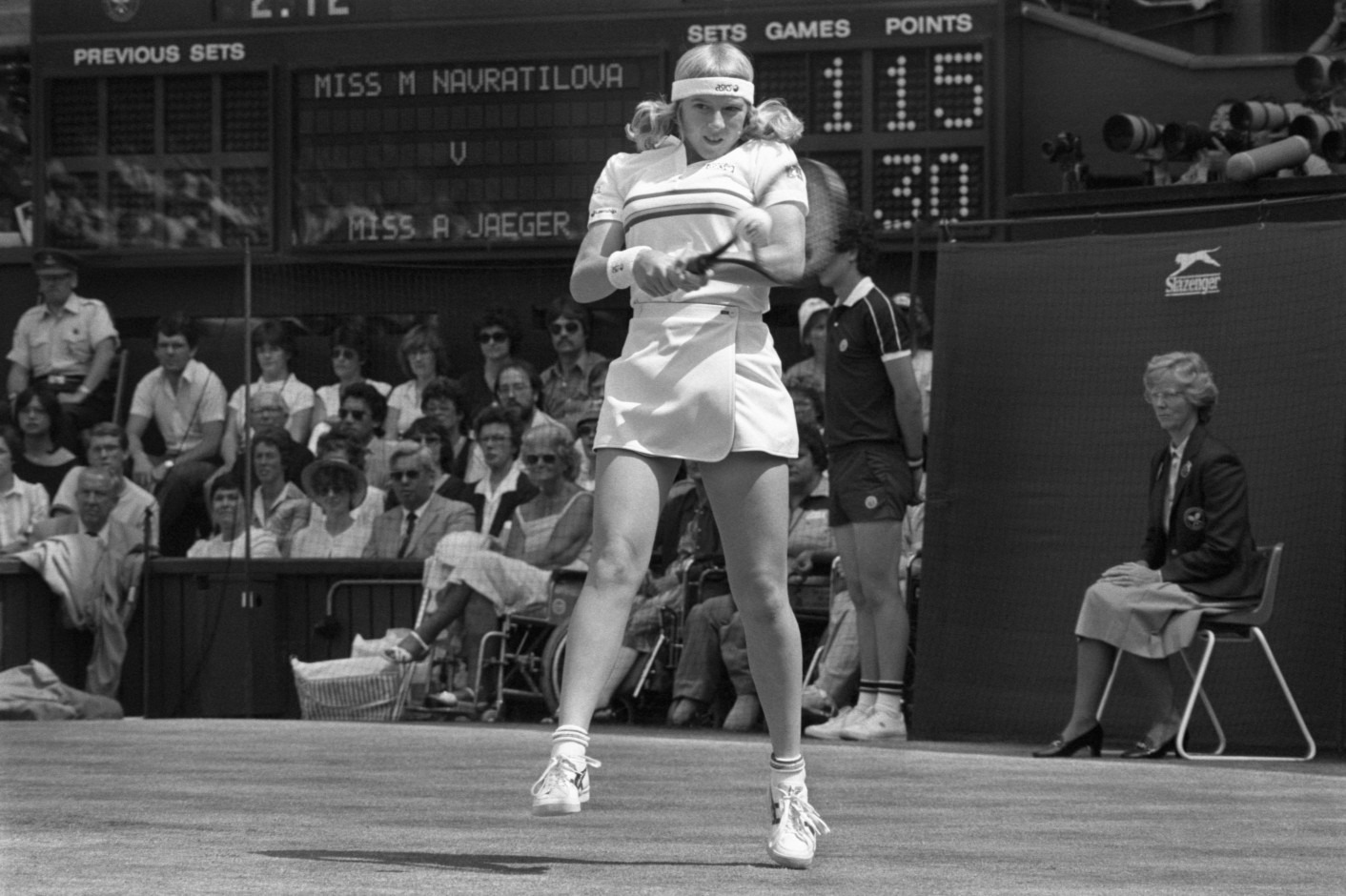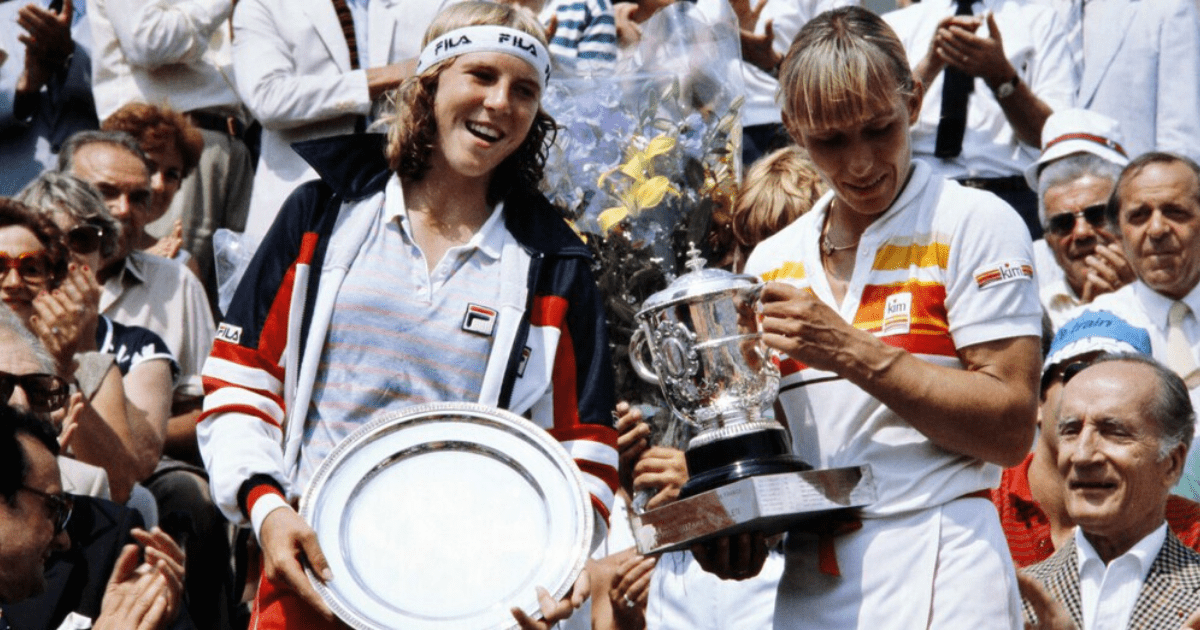Andrea Jaeger's Remarkable Journey from Tennis Star to Sister
Andrea Jaeger, once a rising tennis star, shocked the world when she left the sport at just 19 years old. Prior to her decision, Jaeger had already achieved great success, reaching the semi-final of the Australian Open, Wimbledon final, and securing a No. 2 ranking in the WTA. However, Jaeger's true calling led her down a different path – one that would see her dedicate her life to helping others.
Early Success and Early Retirement
Jaeger burst onto the tennis scene as a child prodigy, turning professional at the young age of 14. She quickly made her mark, reaching the finals of two Grand Slam tournaments as a teenager. However, a shoulder injury forced her to retire at the age of 19 in 1985. Despite her short career, Jaeger earned over £1million in prize money and endorsements.
A Life of Service
After leaving tennis behind, Jaeger embarked on a new journey of service. In 1990, she founded the Silver Lining Foundation, which provides care to children with cancer. In addition to her philanthropic work, Jaeger pursued her studies in theology and ministry training, eventually becoming a nun.
From Tennis Court to Convent
Jaeger's decision to become a nun was driven by her deep faith and desire to help others. She follows a strict discipline, waking up at 4am to pray and study before dedicating her day to fundraising and running programs for children in need. Despite the challenges of her new vocation, such as getting her habit stuck in buses and escalators, Jaeger finds solace and joy in her role as a sister.

Harassment and Hardships
In a recent interview, Jaeger shed light on the harassment she faced as a young tennis player. She revealed incidents such as her racquet strings being cut and razor blades placed in her shoes. She also shared a disturbing experience of being sexually harassed by a WTA staff member, leading her to avoid the locker room and feel sickened by the encounter.
A Journey of Faith and Resilience
Andrea Jaeger's remarkable journey from tennis star to nun is a testament to her unwavering faith and dedication to helping others. Her decision to leave the competitive world of tennis behind and embrace a life of service is an inspiration to all. Jaeger's story serves as a reminder that there is more to life than athletic achievements and that true fulfillment can be found in serving others.
Frequently Asked Questions
What is the history of tennis?
Tennis originated in 12th-century France, when monks played a game known as jeu de paume using their hands to strike the ball. Tennis evolved over time as rackets became available. By the 16th century, the game became popular among the European nobility. Tennis has seen many changes over the years, such as the introduction of lawn-tennis in the nineteenth century and the standardization of rules.
How have women’s contributions shaped tennis?
Tennis has been shaped by women, through their performances on the court and their advocacy for equality and respect off the court. Billie Jean King’s campaign to equalize prize money and opportunities for women led to the formation of the Women’s Tennis Association in 1973. Steffi Graef, Venus & Serena Williams & Martina Navratilova have all contributed to the rise of tennis through their talent ad competitive spirit. Women’s Tennis is also a sport that attracts equal viewers, highlighting its appeal and inclusivity.
What role did tennis icons play in popularizing tennis?
Tennis icons played a crucial role in the globalization of tennis. Throughout history, charismatic players such as Billie Jean King and Pete Sampras have captured the imagination of the public. Their achievements on the court and personalities off it have not only drawn fans to the game but also inspired younger generations of players to take up this sport. The legacy of these players goes beyond the titles they have won. It also includes shaping the culture and marketplace for tennis.
What are some of the most important components to tennis etiquette.
Tennis etiquette plays a major role in the game and reflects respect, sportsmanship, and good manners. Players must be honest when making line rulings. They should also avoid distractions in serves and remain silent throughout rallies. Audiences can participate in this etiquette as well by remaining silent during the match and applauding great shots from both competitors. The integrity of tennis and its gentlemanly tradition are preserved by following these unwritten guidelines.
Who has been credited with standardizing modern tennis?
Major Walter Clopton Wingfield is largely credited with standardizing the modern game of tennis. In 1873 Wingfield invented a new version of tennis, called Sphairistike. The game was played on a grass hourglass court. Wingfield’s version of the sport included a simplified system for scoring and similar equipment to that which is used today. This version laid the groundwork for the modern rules of lawn-tennis. In 1877 the first Wimbledon Championships took place, establishing the structure and rules.
Statistics
- Since the Open Era began in 1968, allowing professional players to compete in the Grand Slams, the United States has produced the most Grand Slam singles titles across men’s and women’s competition.
- The modern game of tennis originated in England in the late 19th century, with the first Wimbledon Championship held in 1877.
- The four Grand Slam tournaments collectively attract over 3.5 million spectators in person, highlighting tennis’s enduring appeal.
- The International Tennis Federation (ITF) governs over 200 nations, indicating the sport’s vast international governance structure and participation rate.
- Major Walter Clopton Wingfield is often credited with pioneering the rules of modern tennis in 1873, and his version of the game was patented under the name “Sphairistikè.”
External Links
tennis.com.au
usta.com
tennisfame.com
rolandgarros.com
bbc.com
How To
Tennis History – How to Research It
For a deeper look at the history and development of tennis, you can explore historical periods from the origins as “real tennis” in France’s 12th-century to its current form as lawn Tennis. Libraries, online databases and archives of sports organizations are good places to find references. The codification of the rules by Major Walter Clopton Wingfield, and the creation of prestigious tournaments such as Wimbledon are notable milestones. Tennis history resources and books are available at the International Tennis Hall of Fame.

